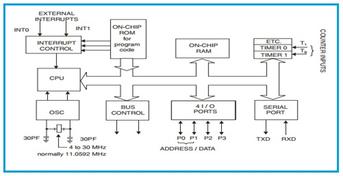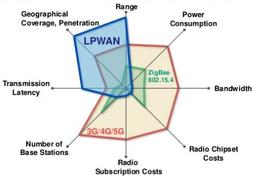
LoRaWAN: Implicit vs. Explicit Headers Explained
Learn the difference between implicit and explicit headers in LoRaWAN packets, including structure, information contained, and usage.
Showing 20 posts (Page 73 of 162)
Advertisement

Learn the difference between implicit and explicit headers in LoRaWAN packets, including structure, information contained, and usage.

Explore the differences between Line of Sight (LOS) and Non-Line of Sight (NLOS) wireless channels, their impact on signal quality, and common applications.
Explore the core differences between lossless and lossy data compression techniques, their applications, and commonly used algorithms.

Explore the differences between low-pass and band-pass sampling techniques, including Nyquist criteria, anti-aliasing filters, and frequency translation.

A detailed comparison of the LPC2148 and 8051 microcontrollers, highlighting their features, specifications, similarities, and differences.

A breakdown of LPDDR generations (1-5), covering clock frequencies, speeds, bus sizes, supply voltages, and prefetch sizes for mobile devices.

Comparison of LPDDR4 and LPDDR5 DRAM, highlighting key differences in speed, voltage, and features for mobile devices.

Explore the benefits and drawbacks of LPDDR5 RAM, a low-power memory standard used in mobile devices, focusing on speed, power consumption, and performance.

Learn the differences between Low Pass, High Pass, Band Pass, and Band Stop filters. Understand how each filter type works and what frequencies they pass or block.

Learn how LPG leak detectors work, their advantages (safety, early detection) & disadvantages (false alarms, maintenance). Essential safety devices for LPG environments.

Explore the pros and cons of Low Power Wide Area Networks (LPWANs) for IoT, including range, power, cost, and limitations.

Explore the pros and cons of LSZH (Low Smoke Zero Halogen) cables, including benefits, drawbacks, and applications.

Understand the differences between LSZH, Plenum, and Riser cables, their applications, and key features for informed cable selection.
Explore the continued relevance of the LTE 450 MHz band, its use cases in IIoT, smart grids, and private networks, and its advantages like long range and superior penetration.

An overview of LTE Advanced architecture, including E-UTRAN components like P-GW, S-GW, MME, and eNB. Also details the protocol stack divided into NAS and AS layers.
Explore LTE Advanced technology gain for features like MIMO, CoMP, beamforming, and interference cancellation in a concise table.

Explore LTE Advanced UE categories (Cat6-Cat12) with key parameters like data rates, DL-SCH, UL-SCH, and modulation schemes for efficient mobile communication.
Explore the evolution of mobile broadband with a clear comparison of LTE Advanced and LTE Advanced Pro, highlighting their features, data rates, and applications.
Explore the benefits and drawbacks of LTE technology, including data speeds, coverage, cost, and infrastructure requirements.
Understand the relationship between LTE bandwidth, sampling frequency, and resource blocks. Includes a table of common LTE configurations.
Advertisement